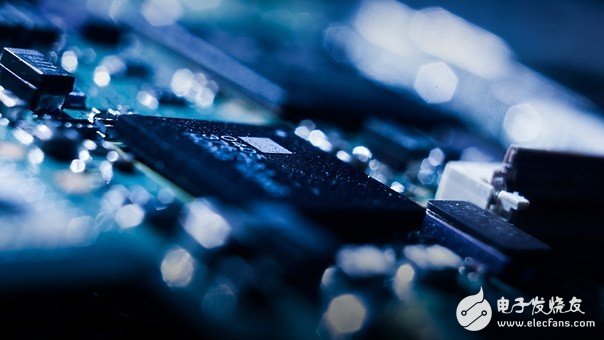2017 is a year of ups and downs in the electronics industry and a year of record. Looking back on this year, enterprises are surging and vying for layout; national policies are issued in tandem to promote development. But no matter what, the electronics industry is still like the summer sun, shining and dazzling. At the same time, in this brilliant and splendid year, many important events have occurred in the electronics industry, which has affected the direction of the electronics industry to a certain extent and promoted the development of the electronics industry. At the end of the year, Xiao Bian also carefully launched the 2017 electronic industry news event to readers.
I. 4 national standards for integrated circuitsOn January 16, the Ministry of Industry and Information Technology announced four national standards in the field of integrated circuits, mainly focusing on memory testing. At the same time, the national storage base project with a total investment of 24 billion US dollars was officially started in Wuhan East Lake High-tech Zone. SMIC's 40nm ReRAM high-end memory chips have also been sampled. It is understood that after the project is fully completed in 2020, the annual output value will exceed 10 billion US dollars, achieving a breakthrough in the "zero" scale of China's integrated circuit memory chip industry.

In addition, in order to get rid of the passive situation of “subject to people†in the electronics industry, the state has also proposed a development goal of at least 20% growth rate of China's semiconductor industry by 2020 in the “National Integrated Circuit Industry Development Promotion Program†policy. At the same time, "Made in China 2025" clearly stated that China's chip self-sufficiency rate should reach 40% in 2020 and 50% in 2025.
Editor's comment: The national policy has always been the bright light and benchmark for the development of the industry. How to better apply the national policy is also a problem faced by all enterprises. With the continuous development of technologies such as 5G, artificial intelligence, Internet of Things and automatic driving, China's domestic chip companies will also usher in a turning point. On the one hand, the global electronics industry market has increased demand for chips; on the other hand, Moore's Law is slowing down, and China is expected to catch up with global advanced companies.
2. Qualcomm was sued by the US Federal Trade Commission and Apple.On January 17, the US Federal Trade Commission filed a lawsuit against Qualcomm on the same day, alleging that Qualcomm had improperly maintained its monopoly position in semiconductor equipment. A few days later, Apple also filed a lawsuit against Qualcomm for a $1 billion patent fee.
According to a lawsuit filed in the federal court in California, Qualcomm was accused of using its position as a major supplier of mobile phone processors to make cumbersome terms to handset manufacturers. If the customer accepts Qualcomm's priority patent license terms, the processor will be sold to it, and the handset manufacturer will pay Qualcomm a high license fee if it uses other brands of chips. In addition, the Federal Trade Commission also accused that from 2011 to 2012, Qualcomm in exchange for providing hundreds of millions of dollars in rebates, demanding as the only chip supplier for the iPhone, iPad, is unfair competition.
Apple filed a lawsuit in the Southern California court, accusing Qualcomm of selling chips at an excessive price and refusing to pay its promised $1 billion refund. Apple has had discussions with the anti-monopoly agency Korea Fair Trade Commission (KFTC), and Apple believes that Qualcomm’s delay in issuing refunds is also due to this.
Editor's comment: The US Federal Trade Commission's prosecution against Qualcomm comes from antitrust investigations, and Apple filed a lawsuit against Qualcomm. The amount of the claim is not critical. The most important thing is that the court will become an industry example and have a demonstration effect. If you can take some of the opportunity to make some adjustments to the patent payment mechanism, it is a good thing for the entire mobile phone industry.
3. Groffontein invested 10 billion in ChinaOn February 10, Groffonte, the world's second-largest foundry chip maker, announced that it would spend $10 billion to build a 12-inch wafer fab in Chengdu, China.

"The country is the largest and fastest growing semiconductor market in the world, and Sichuan has strong strength in the development of the integrated circuit industry, with a large number of talents and rich experience, and is setting up a global investment scale here." The largest and most technologically advanced wafer fab is a very sensible choice."
Editor's comment: Judging from the business situation of Grofund in recent years, it seems that it is a last resort to open a factory in China. Moreover, from the refusal of several cities such as Chongqing, the price of gold contained in Grofund is worthy of evaluation, and in the case of commercial production of the 14nm process in Grodfont, in the case of AMD processing the latest Zen architecture chip. It is still chosen to introduce the 22nm SOI process into China in 2018, and it will be put into production until 2019. For China's current market, Groffont's investment is more like a bet. After all, the strengths of SMIC and Hualiwei are not behind Groffont.
Marine Control Cable,Cwb Marine Control Cable,Ship Control Cable,Shield Marine Cable
Baosheng Science&Technology Innovation Co.,Ltd , https://www.bscables.com
